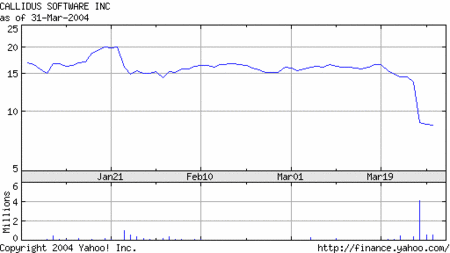Jeff Nolan has a good overview of stock option expensing, and why we should get involved. While I agree for the need for complete transparency of stock options, I also do not believe that expensing all options at the grant date will get us closer to true economic reality. In addition, I believe the unfair burden of stock option expensing falls on private companies-FASB even recognizes this. As for public companies, the market will adjust and look at numbers with and without option expensing, converging on what all other investors use. So from a public market perspective, while hurting the perceived earnings of a number of companies, I do believe that expensing stock options will not make as big a negative impact as some think. We all know that investors will use a number of different proforma income statements to designate value anyway whether or not options are expensed.
Therefore, what concerns me is what happens to the non-executive employee at public companies and how stock option expensing affects private companies. Rather than go into a diatribe on the ineffectiveness of Black Scholes and the Binomial Pricing model, I want to focus my efforts on what happens when stock option expensing goes into effect. It will eliminate broad-based option pools for public companies and private companies. Why? It is easy for me to say that the market will be efficient and see through all of the numbers creating its own set of rules for valuation. However, companies will choose the path of least resistance which means keeping the income statement as clean as possible which means eliminating broad-based option plans and the variability that comes with it. If anything, companies may give restricted stock to executives and other key players but not to all employees. The bigger concern is that the extra reporting burden it creates for private companies will be quite costly and burdensome, possibly outweighing the positive effects of issuing broad-based options. Without options, this will make it harder for cash-starved private companies to attract talent as they will not be able to pay the cash compensation that larger companies can afford. Since I am in the business of funding private companies (a big engine for job growth) that use an ESOP as a competitive tool to attract talent, I am concerned by the FASB proposal. Therefore, I ask you to get involved while FASB is in its review period and write to them:
Go visit Jeff Nolan’s post for links to articles to further educate yourself on the stock expensing issue and to learn how to get involved. As per his post:
– emails should be directed to director@fasb.org with a cc: to jcdowling@nvca.org – if you have specific questions about the proposal, Michael Tovey is the project director for this at FASB, his email is mtwovey@fasb.org – your email should reference file # 1102-100
I would also keep an eye out for a new bill (H.R. 3574, the Stock Option Accounting Reform Act) being pushed around Congress. According to CFO Magazine,
The bill would require the Securities and Exchange Commission to complete an economic impact study before FASB is permitted to implement its proposed rule. In addition, the bill would require companies to expense only stock options granted to the CEO and the next four highest-paid officers. Small businesses would be entirely exempt from FASB’s rule; newly public companies could forgo expensing for three years.
While a compromise this bill does partially address my concerns about hurting private companies and the regular employee.
